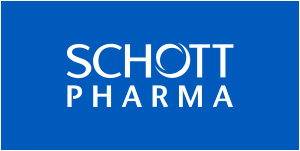The 'Next Gen Vials' from Schott combine a number of features leading to unmatched drug stability even for so-called low-fill applications and efficient and cost-competitive fill and finish.
The superior chemical resistance and extractables and leachables (E&L) profile make the vials highly suitable for sensitive biotech drugs, high potent drugs or vaccines.
The vials are made of an improved Type I FIOLAX borosilicate glass and include the company's validated delamination controlled production process, both ensuring a particularly improved resistance of the inner surface.
Pharma companies can replace conventional tubular type I glass vials for already marketed drugs with the next generation of vials without costly re-registration. The complete product offering will be based on a modular approach depending on the customer’s needs.
The new vials are now ready for order from the company's US and German facilities.
Intelligent combination
"The next generation of vial is the result of longstanding expertise and co-innovation with our customers," said Schott executives Andreas Reisse and Patrick Markschläger.
"New therapies require the packaging to attribute greater attention to drug stability and minimize drug/container interaction during shelf life – yet pharma manufacturers want to avoid the hassle of lengthy registration processes. At the same time, performance on the filling line needs to ensure higher and higher yields," said Reisse.
Schott has taken action on all of these aspects in recent years, including an improved converting process to control the risk of delamination and the introduction of an improved FIOLAX borosilicate glass, named by its hydrolytic custom specification FIOLAX CHR (controlled hydrolytic resistance). With the Next Gen Vial concept, these and upcoming benefits and innovations will be combined in a modular product offer.
Vials with improved Hydrolytic Resistance
The chemically homogeneous FIOLAX CHR tubing lays the foundation for a unique vial that meets twenty-first century market demands. This borosilicate glass comes with a highly reduced and certified level of alkalinity release of the inner surface, enabling a superior extractables and leachables profile with the right converting process.
Besides the hydrolytic resistance test according to EP 3.2.1 and USP <660>, the company’s patented Schott Quicktest is used as release criteria to ensure this superior leaching profile and the delamination controlled process.
The unique combination of superior glass and converting process leads to a high chemical stability and improved resistance of the inner surface of the vial, especially in the bottom area.
Perfect fit for low-fill applications
This superior chemical profile is especially beneficial for biologics, high potent drugs, vaccines and so-called low-fill applications. The latter refers to the vial being filled with a significantly smaller amount of the drug than the nominal volume of the container. Consequently, the ratio of the wetted surface to the volume is increased, which leads to a proportionally increased concentration of leached elements.
This is particularly critical for sensitive formulations. Thanks to their high chemical resistance Schott’s next generation vials show a low concentration of leached “glass” elements even for low fill volumes – a major advantage over vials made of aluminosilicate glass.

